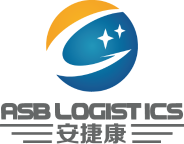Time:2015-09-08 Publisher:Atlas Ocean Breeze Shipping Company Num:680
Alliances help on the oceanside . . .
All the major container shipping lines are now allied in four large groups: the G6 (APL, Hapag-Lloyd, Hyundai Merchant Marine Company, Mitsui O.S.K. Lines, Orient Overseas Container Line, and NYK Line), CKYHE (China Ocean Shipping (Group) Company, Evergreen Marine Corporation, Hanjin Shipping Company, “K” Line Ship Management Company, and Yang Ming Group), Ocean Three (China Shipping Container Lines Company, CMA CGM, and United Arab Shipping Company), and 2M (Maersk Group and MSC).
The alliances have allowed the larger lines to achieve some further measure of resource rationalization, but the main beneficiaries have been the smaller lines. The allied smaller lines have been able to serve more destinations without spending billions on a larger fleet of ships. They can furthermore enjoy the advantages of using larger ships on the main trades. Given that a vessel with 14,000 twenty-foot equivalent units (TEUs) can be 30 percent more fuel efficient per box than a 7,000-TEU vessel, the savings quickly add up.
. . . but not on the landside
The operational alliances are in effect for assets at sea but come to an end once the boxes are unloaded. On land, the lines separate one from the other: each has its own terminal agreements, trucking contracts and dispatching arrangements, railroad agreements, and operations management. The scale advantage realized at sea likewise comes to an end. To take one important example, CKYHE is the largest alliance in the Asia–to–North America trade, despite the fact that most of its constituents are smaller than the average size for the major lines (Exhibit 1). Operating separately on land, the lines lose the scale advantage.



